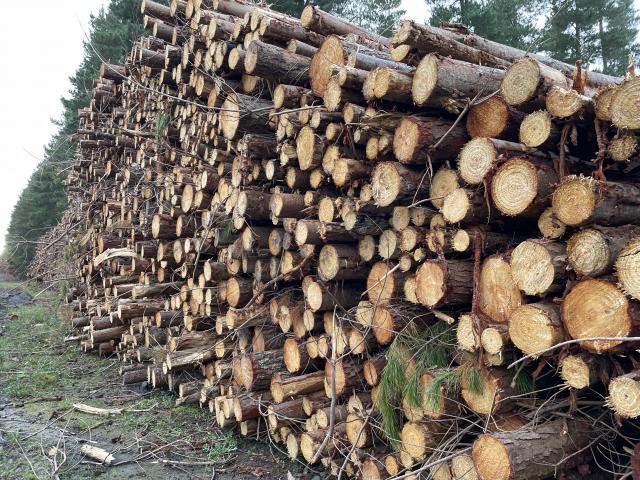The following is the final part of a three-part opinion submission, detailing the history of forestry in Victoria, namely in Gippsland and the Central Highlands, submitted by freelance forestry writer Philip Hopkins.
The ignoring of the landscape context, and rigid separation of production and reserved forest areas, was to have a devastating impact on timber availability.
VicForests was squeezed for forest and forced to harvest near small towns such as Mirboo North and Noojee, sparking opposition to its plans. Industry figures also did not want to harvest near these towns.
A report by Deloitte showed that in 2015-16, Gippsland’s native forest industry generated a direct $770 million in revenue and supported more than 2500 jobs, most in the regions. This study did not include downstream processing in areas such as furniture and cabinet making in Melbourne.
The RFAs became a focal point for green activists, who launched several legal actions through the High Court, the Federal court and state courts in a bid to close the native forest industry. VicForests lost several cases but won them on appeal. Data for the update of the RFAs showed that the Victorian RFAs had not lived up to their original expectations. A total of 657,000ha of native forest had been added to conservation areas, raising the total to well above more than half of public forest. The volume of saw logs and pulp logs in state forests had been halved from about 2.2 million m3 in 2000-01 to 1.2m m3 in 2015-16.
Retention harvesting, where clumps of habitat trees are retained in logging coupes, began to replace clear-felling. This further lowered harvested log volumes as previous sustainable yield figures were based on harvesting the entire coupe.
However, the government dropped a bombshell announcement in November 2019 that the native forest industry would close in 2030 with step-downs from 2024.
Then, the immediate summer after the announcement featured the devastating 2019-20 bushfires that burnt 650,000 hectares of native forest set aside for the timber industry in Gippsland, the Yarra Valley and Victoria’s north-east. The fires affected nearly 760,000 ha of Victoria’s CAR reserve system, which totals 4.3 million ha. Of this, 2.9 million ha are in the RFAs.
A major state and federal review of the 2019-20 bushfires, released in January, made 37 recommendations, chief of which was that forest and fire management should be done on a landscape scale, with active management over long time frames.
“The forests are sick because we are not managing them properly,” said panel member Tony Bartlett, a decorated bushfire expert.
“The fires affect all values in reserves. Logging is not the enemy of these forests. Uncontrolled wildfire… is having the biggest impact.”
The review concluded that Victoria’s annual timber supply commitments could still be met and support ecologically sustainable forest management.
Environmentalists maintained that the Greater Glider was the biggest victim of the fires, and stricter controls on timber harvesting were introduced to protect the glider. Two green groups won a case in the Supreme Court, which found that VicForests had failed to adequately survey for protected glider species. Harvesting of native timber effectively ceased; mills began to run out of wood, which eventually led to Australian Paper ceasing production of white copy paper at its Latrobe Valley Maryvale mill. Between 150-200 workers lost their jobs.
Debate centred on the wording in the code of timber practice, particularly the interpretation of the precautionary principle, the Opposition maintained that tweaking of the wording in the Act would stop the legal action.
However, another bombshell occurred in the state budget, when the government decreed that the native timber industry would close in January 2024.
The industry’s dire outlook was compounded when the Supreme Court of Appeal dismissed the appeal by VicForests against the court’s earlier decision. The Court of Appeal held that the trial judge had correctly interpreted the requirements of the code and that the declarations and injunctions were lawful. There was no consideration of the landscape context.
Forestry Australia, a professional forestry body, fears that the court decision means that the future of Victoria’s forests has been captured by political ideology and complex legalities rather than being determined by science and professional expertise.
The president of Forestry Australia, Dr Michelle Freeman, said the precautionary principle should not be regarded as a hard and fast rule.
“That’s why it is termed the ‘precautionary principle’, not the ‘precautionary rule’,” she said.
In August 2021, the Department of Jobs said the maximum potential harvest levels of D+ saw logs were 172,000m3 for Ash and 144,000m3 for Mixed Species, with about 4.6 per cent of Victoria’s 7.9 million ha available for harvesting annually. In Europe, the industry has access to 80 per cent of the mixed softwood and hardwood native forest, with about 12 per cent in parks and reserves.
Subsequently, DEECA completed risk assessments for 142 threatened species and communities, placing another 100,000 hectares-plus of forest in protection zones and protections for threatened species
Apart from isolated specialist timbers, harvesting of native forest in Victoria is now largely gone.







